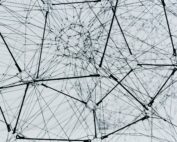Fiber Optic Installation Overview
1. Planning & Design
- Identify fiber type: Single-mode (OS1/OS2) for long distances or Multimode (OM3/OM4/OM5) for short to medium distances
- Determine route, conduit, and slack requirements
- Choose termination method: pre-terminated, field termination, or fusion splicing
2. Cable Installation
- Pull or blow fiber into conduit, tray, or duct
- Maintain minimum bend radius (typically 10x the cable diameter)
- Label cables at both ends
- Terminate with connectors (LC, SC, ST, MPO) using:
- Pre-polished connectors
- Fusion splicing (most reliable/low loss)
- Mechanical splicing (faster but higher loss)
Fiber Certification & Testing
Tools Needed:
- OLTS (Optical Loss Test Set) – measures insertion loss
- OTDR (Optical Time Domain Reflectometer) – detects breaks, splices, distance
- Visual Fault Locator (VFL) – laser light to locate faults/bends
- Fiber Inspection Microscope – checks connector end faces for contamination or damage
Certification Tests (per TIA-568 & ISO/IEC):
| Test Type | Purpose | Pass/Fail Criteria |
|---|---|---|
| Insertion Loss (IL) | Signal strength loss over link | ≤ 0.5 dB typical per connector |
| Optical Return Loss (ORL) | Reflected signal level | Higher is better (e.g., > 20 dB) |
| Length & Polarity | Confirm end-to-end match | Correct A-B mapping |
| OTDR Trace | Checks for bends, breaks, and splice quality | Smooth profile expected |
Troubleshooting Fiber Issues
| Symptom | Possible Cause | Solution |
|---|---|---|
| No link / light | Break in fiber, dirty connector | Clean connectors, check continuity |
| High insertion loss | Bad splice or connector, bend radius | Re-splice, re-terminate, inspect bends |
| Intermittent connectivity | Loose connection or movement | Secure cables, inspect for microbends |
| High ORL | Dirty or mismatched connectors | Inspect, clean, and re-mate connectors |
| Failed certification | Cable exceeds loss budget | Replace sections, re-test with OTDR |
Tip: Always clean both ends of fiber before connecting—even new cables!
Common Fiber Types
| Fiber Type | Core Size | Max Distance | Color Code | Use Case |
|---|---|---|---|---|
| OS2 | 9 µm | 10 km+ (single-mode) | Yellow | Campus, metro, WAN links |
| OM3 | 50 µm | 300 m @ 10Gbps | Aqua | Data centers, backbones |
| OM4 | 50 µm | 400 m @ 10Gbps | Violet | Higher-performance multimode |
| OM5 | 50 µm | 400 m+ (SWDM) | Lime green | Next-gen parallel optics |
Best Practices
- Use LC connectors for high-density panels
- Maintain proper labeling and documentation
- Use patch panels to avoid re-terminating field fiber
- Don’t mix single-mode and multimode
- Always test and certify after install, and keep records for warranty/support


